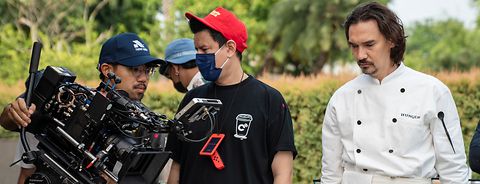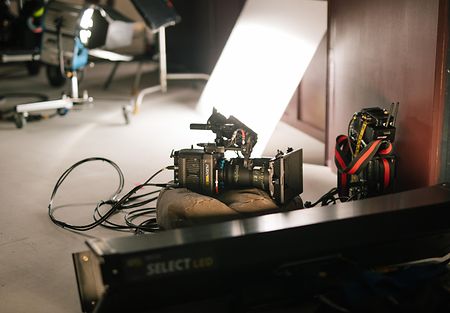“Hunger” is a compelling tale that follows the journey of Aoy, a young female cook who runs her family’s local noodle shop, and her unexpected entry into the cut-throat world of fine dining by joining the luxury culinary team Hunger. The story depicts two distinct realms of dining and the challenges Aoy faces in trying to navigate and survive in both.
“One of the main discussions director Sitisiri Mongkolsiri and I had was how to effectively illustrate the contrast between rich and poor, corporate and local. There were numerous scenes crafted to mirror the class divide, taking the audience in and out of both worlds and making them experience the textures of fine dining against Aoy’s humble neighborhood restaurant,” says cinematographer T-Thawat “Pete Taifa” Taifayongvichit (“Girl from Nowhere”).
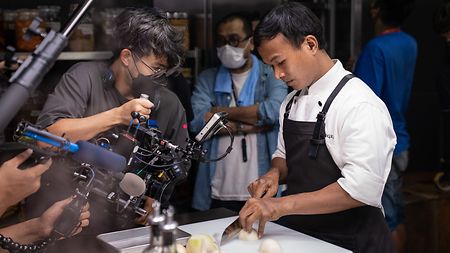
DP T-Thawat Taifayongvichit capturing the textures of food with the ALEXA Mini LF
With this theme in mind, Taifayongvichit was tasked with visually translating it on screen. “We decided to have simpler camera setups for the local noodle restaurant and richer camera movements for the scenes with team Hunger. For the local portion of the film, we just had our cameras on sticks or handheld most of the time. The tracking and Steadicam shots were all reserved for the fine dining world. Additionally, Aoy’s family restaurant was lit with harsher and less flattering lights, while the luxurious scenes had softer and more controlled lighting,” he explains.
When talking about the camera choice, the DP reveals that his decision was largely influenced by the need to capture multiple characters within the various kitchen locations. “The large-format sensor of the ALEXA Mini LF gave us the shallow depth of field that we needed to isolate individual characters within a crowded space, even while shooting at T/2.8 or T/4. Moreover, the compact and lightweight nature of the camera made it easy to fit onto different rigs and allowed smooth handheld shooting,” he says.
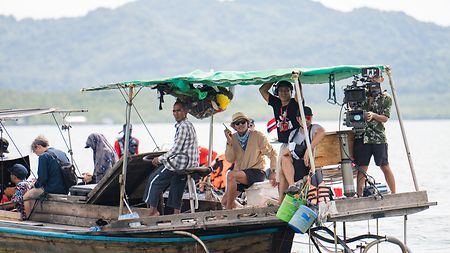
The crew with the ALEXA Mini LF rigged to a fishing boat
“The Mini LF’s high dynamic range also proved beneficial in depicting the significant backdrops of the different worlds in the film. For instance, we wanted to show the Bangkok skyline as the background for Chef Paul’s kitchen headquarters and the affluent hospital juxtaposed to the local streets in the background of Aoy’s family restaurant. The dynamic range helped us achieve this without worries about losing details in the highlights,” he continues.
“I just loved HDR for this project,” Taifayongvichit exclaims as he talks about some of the most intense scenes in “Hunger” which involved fire. “The ability to have the fire brighter in Aoy’s cooking battles enabled us to make it feel more powerful. After all, our main character’s specialty is frying with extreme heat.”
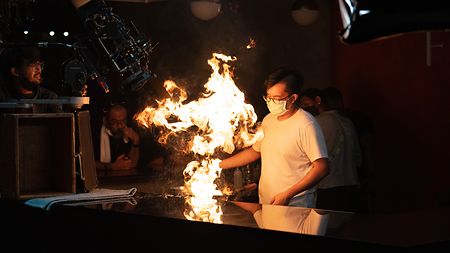
The ALEXA Mini LF capturing intense fire scenes
As a culinary film, food was a vital element in “Hunger,” and capturing it perfectly was a crucial goal. “Chef Chalee Kader, who served as our food stylist, beautifully designed the food shots, and it was my responsibility to do justice to his work. During the Hunger crew's catering missions, we used very stylized lighting. The exceptional image quality and color science of the ALEXA Mini LF preserved all details of the food shots despite the extreme lighting conditions, so that we could still dial the texture and color of the food back closer to its original appearance in post,” says Taifayongvichit.
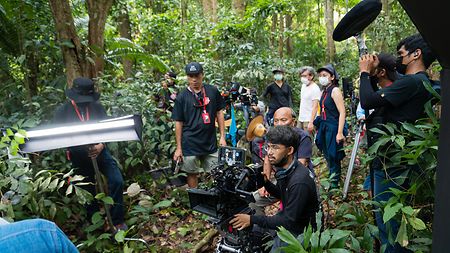
The “Hunger” crew shooting on location in the forest
“We parked our white balance at 5600 Kelvin throughout the shoot, relying on our lights to achieve the desired color for specific scenes instead of adjusting the white balance in-camera,” says Taifayongvichit, who also mentions that this would not have been the case if he didn’t have complete trust in the Mini LF sensor. He goes on, “We had harder and uncontrolled lighting with varying temperatures for the local shop scenes, but the Mini LF gave me the confidence to light the scenes boldly without having to worry.”
“In the final sequence, which takes place at a birthday party, we used RGB concert lights to create more dynamic movements and adjusted the temperatures to extreme spectrums. At one point, we even had strobing purple and red lights for a cooking scene. Thanks to the sensor’s capabilities, we could experiment with non-traditional lights to achieve our desired texture and visual impact,” says Taifayongvichit.
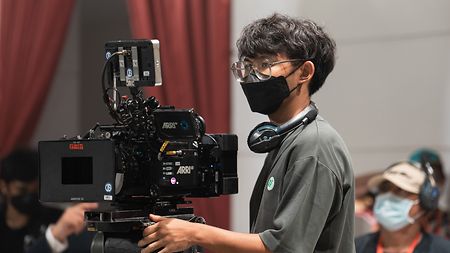
DP T-Thawat Taifayongvichit on set of his first feature film project “Hunger”
With a background in commercial work, Taifayongvichit was thrilled that “Hunger” was his first feature film. “I was excited to collaborate with director Dome (Sitisiri Mongkolsiri) and all the talented cast and crew attached to the project,” he explains. “It’s an exciting time for the Thai film industry as online platforms have enabled us to showcase a wider variety of content. Personally, I felt the need to be on par with other cinematographers working around the world, since I knew that a Netflix Original film will have a global audience. It’s exciting to know there are more stories I could tell with my camera.”
“Hunger” is now streaming on Netflix.
